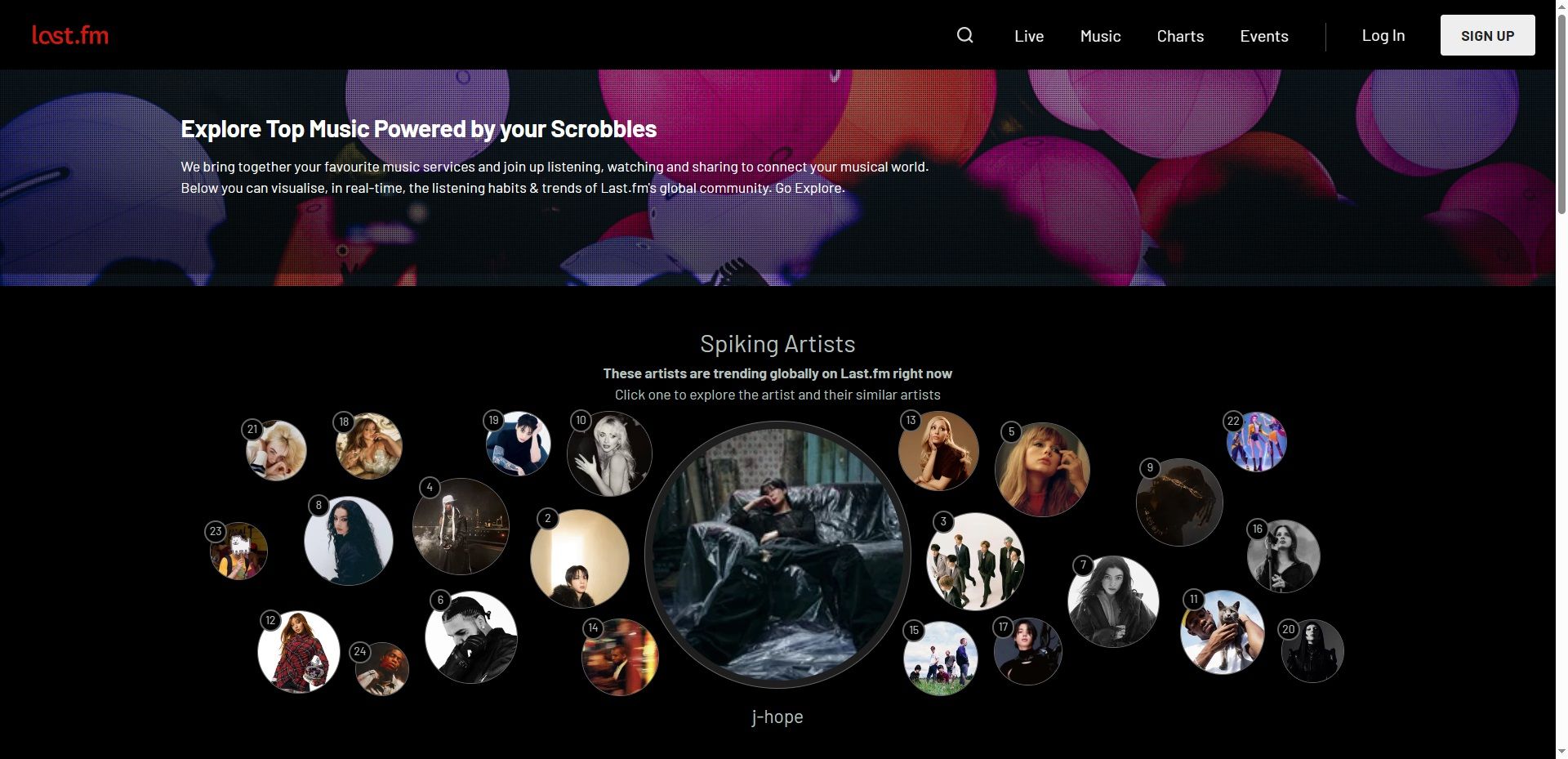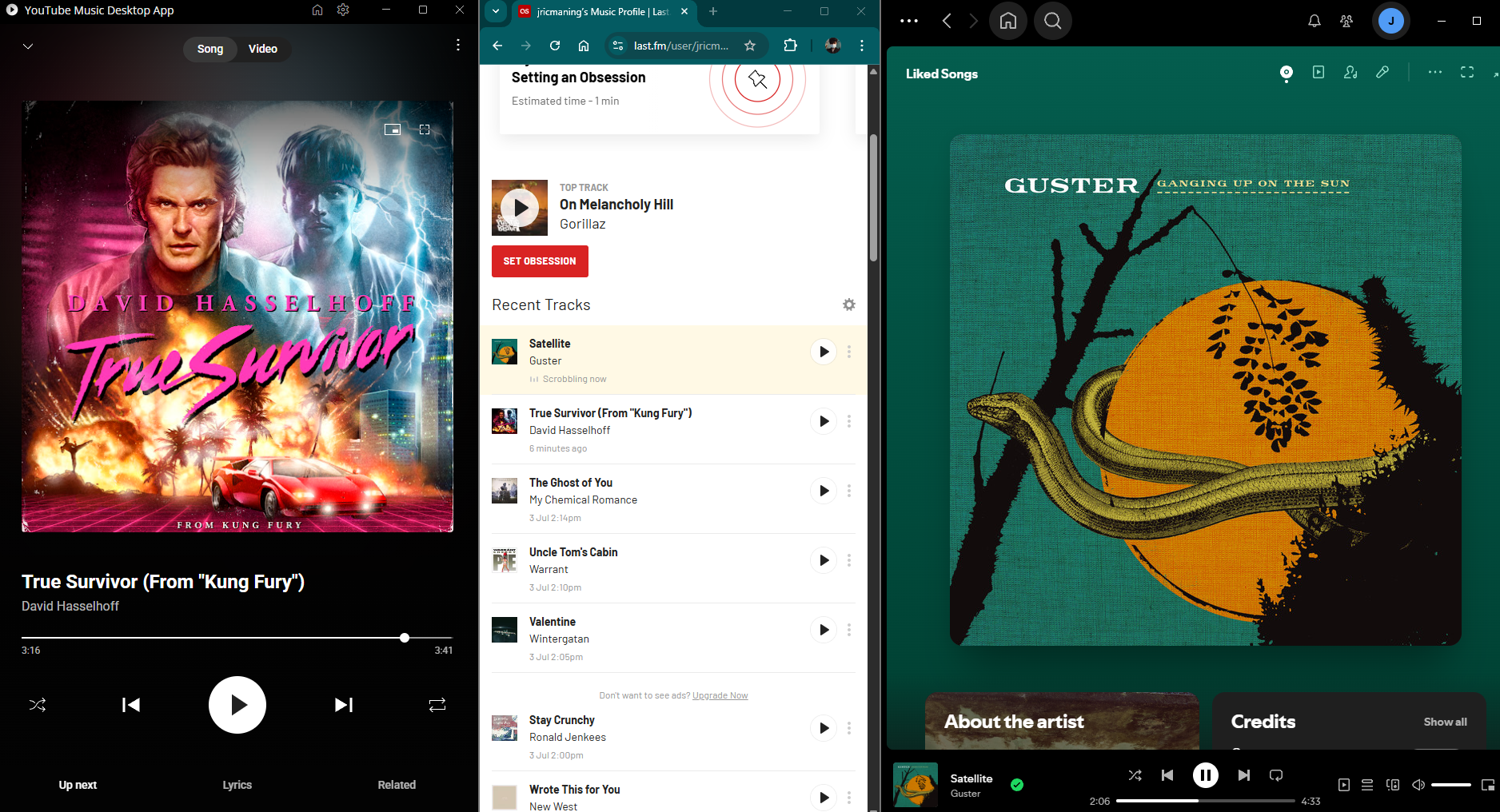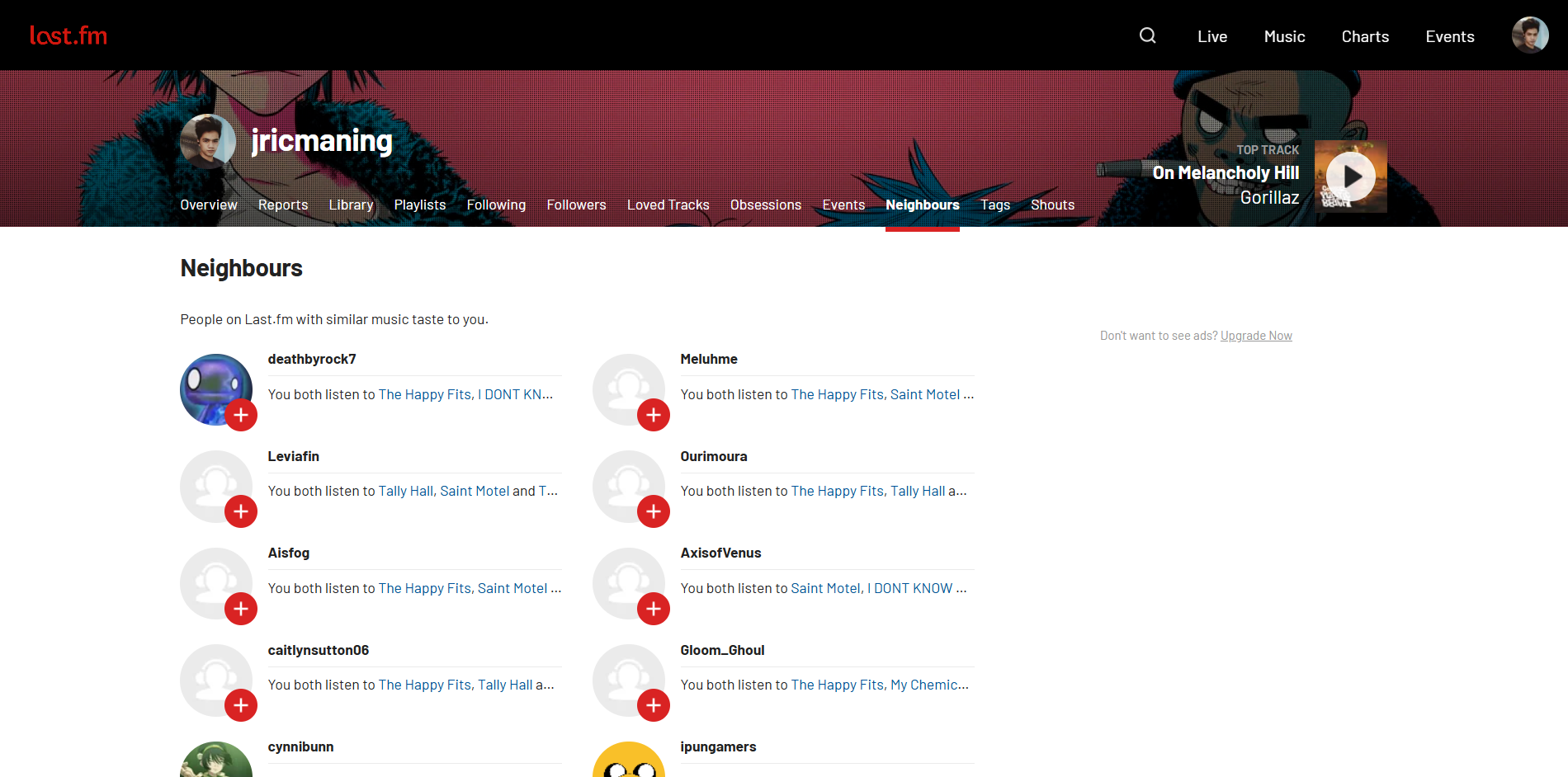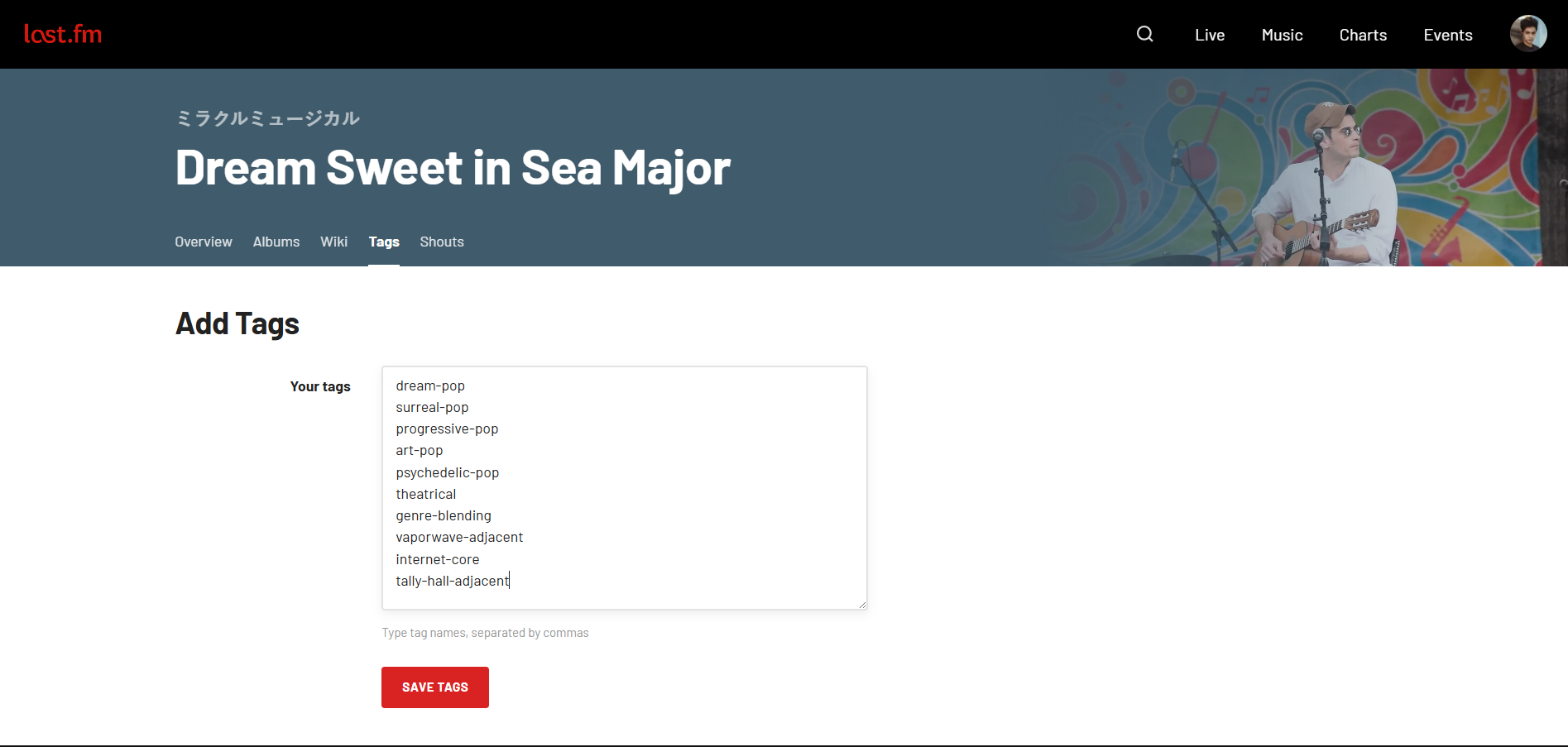I closed my Last.fm account in 2019 and didn’t think anything of it, until I signed back up recently. Right away, it felt like I was catching up with an old friend who had some new stories to tell me.
So while everyone hypes Spotify’s Discover Weekly, this decades-old platform outshines it when it comes to finding new music.
Why I Use Last.fm to Find New Music
Coming back to Last.fm after being away for years felt like stepping into a familiar space that had somehow gotten better with age. The magic of Last.fm lies in its transparent and organic approach to finding the music you like. Unlike Spotify’s black-box algorithm, Last.fm shows me exactly how its recommendations work. When I see that fans of Arctic Monkeys also listen to The Strokes, I understand the connection. When I discover that people who love Radiohead are also into Sigur Rós, that recommendation feels earned rather than manufactured.
Last.fm’s approach to music discovery feels more organic than what I get from typical music streaming services. The platform builds recommendations based on actual listening patterns from real users, not just algorithmic predictions about what might keep me engaged. This community-driven approach means I’m discovering music through the collective data of millions of music lovers worldwide, rather than being fed tracks designed to maximize my time on the platform.
That’s what sets Last.fm apart. Its recommendations feel personal and transparent. When it comes to actually helping me find new music, Last.fm does things that Spotify simply can’t match because of the unique features and discovery tools they offer.
Why Last.fm Is Better Than Spotify to Find New Music
However, keen Spotify subscribers are probably wondering why it’s worth using a completely different platform to find new music when Spotify itself does a reasonable job.
Cross-Platform Scrobbles Keep My Logs Synced
One of the biggest advantages Last.fm has over Spotify is its platform-agnostic approach to tracking music. While Spotify Discover Weekly and Release Radar only show me what I listened to on Spotify, Last.fm tracks everything. Whether I’m streaming on their platform, YouTube Music, or even Spotify, everything gets scrobbled (logged) to my Last.fm profile.
This comprehensive tracking creates a complete picture of my musical journey. Last.fm can integrate with popular music services like Spotify, Apple Music, YouTube, and dozens of other platforms. The scrobbling process captures not just what I listen to, but when I listen to it, creating a detailed timeline of my musical evolution.
Setting up scrobbling across multiple platforms takes just a few minutes. I can connect my Spotify account directly through Last.fm’s website, install the Web Scrobbler browser extension for platforms like YouTube and SoundCloud, or use third-party apps like Pano Scrobbler on my phone. This flexibility means I never miss capturing my listening habits, regardless of where I choose to play music.
Musical Neighbors & Taste Matching Let Me Find Music Organically
The neighbors feature on Last.fm represents everything I love about authentic music discovery. Instead of algorithmic suggestions, I can browse through profiles of people who share similar musical tastes and see what they’re currently obsessing over. This creates a more organic approach to finding new music, where recommendations come with the implicit endorsement of someone who “gets” my musical preferences.
Last.fm’s musical matching goes beyond simple genre categorization. The platform analyzes listening patterns, favorite artists, and even the times when I’m most active musically. This creates surprisingly accurate taste profiles that connect me with users who share not only similar artists but also similar ways of engaging with music.
The community aspect adds context that purely algorithmic recommendations can’t match. When I see that a musical neighbor has been playing a particular album on repeat, I know there’s something special about that record.
To view my music neighbors from my profile, I can click on Neighbors and instantly find dozens of other users with similar music tastes. Most of these connections lead to discovering artists I’ve never heard of, but who fit perfectly with my existing preferences.
Weekly Personal Music Analysis
Last.fm’s weekly reporting puts Spotify Wrapped to shame with its depth and accessibility. While I have to make the most of the annual Spotify Wrapped, Last.fm provides detailed weekly reports that help me understand my evolving musical tastes throughout the year. These reports update every Friday, giving me regular insights into how my listening habits change over time.
The weekly analysis visualizes and compares all the music I’ve been listening to over the past seven days. I can see which artists dominated my week, discover patterns in my listening behavior, and track how my musical interests shift from season to season. This regular analysis helps me understand my relationship with music in ways that annual summaries can’t capture.
The weekly reports also include comparison data, so I can see how my current listening compares to previous weeks. This helps me notice when I’m discovering lots of new music versus when I’m sticking to familiar favorites. Recent updates have even enhanced these features with better visualization tools.
Advanced Filtering Features Allow Me to Rediscover Forgotten Music
Last.fm’s library search functionality represents a massive upgrade in how I can interact with my music data. While Spotify’s search is limited to its catalog, Last.fm’s library search allows me to delve deep into my personal listening history. I can search for specific words in track titles, find all the songs I’ve scrobbled that contain “vaporwave-adjacent” in the tags, or locate those hard-to-remember remasters I know I’ve heard before.
The filtering capabilities go far beyond basic search. I can browse my listening history by specific time periods, from all-time favorites to tracks I discovered just last week. This temporal filtering helps me rediscover music I might have forgotten about or trace the evolution of my musical interests over time.
Updates to Last.fm have made these features even more powerful. For example, it can organize my library based on recency, making it easier to view the most recently scrobbled or edited items.
Lastly, Last.fm’s tagging system creates another layer of discovery that most platforms miss. Users can tag tracks, albums, and artists with descriptive words that go beyond traditional genre classifications. This community-driven tagging creates connections between songs that might not be obvious through algorithmic analysis, leading to more creative and unexpected discoveries.
Third-Party Apps Extend Last.FM Capabilities
Last.fm goes far beyond what any single streaming service can offer, thanks to a thriving ecosystem of third-party apps. These tools, built around Last.fm’s open API, completely changed how I interact with my music data and discover new favorites.
On my phone, apps like Pano Scrobbler give me real control over my listening history. I can edit scrobbles in real time, block artists I don’t want tracked, and even identify songs using my phone’s microphone. It’s a level of flexibility that makes tracking my music feel effortless and personal.
On my desktop, I get a better music experience with YouTube Music desktop apps, which connect directly to Last.fm. Unlike simple browser extensions, these full-featured desktop players scrobbles every track I play on YouTube Music straight to my Last.fm profile. My listening history stays complete and up to date, even when I’m using a dedicated desktop app instead of a browser. No matter where I play music, Last.fm keeps everything in sync.
Visualization tools like Cartogrify take things a step further. By turning my listening data into interactive maps, Cartogrify shows me where my favorite artists come from and highlights patterns in my music taste that I’d never notice otherwise. It’s especially helpful for rebuilding my musical profile after losing years of scrobbles, making my data feel alive and meaningful again.
And those are just a few of the third-party apps I use with Last.fm—there are countless more out there, each offering a unique way to connect, track, and visualize your music. The Last.fm API powers a huge network of independent software, from simple desktop plugins and mobile apps to integrations with smart speakers and home audio systems. This open ecosystem means there’s almost always a way to connect your music back to Last.fm, no matter how or where you listen.
Coming back to Last.fm after losing my account reminded me why this platform has lasted while so many others have faded away. Its community-driven recommendations, cross-platform tracking, deep analysis tools, and rich third-party ecosystem give me a real connection to my music. While Spotify might grab the headlines with flashy features, Last.fm is still where true music lovers go to dig deeper and discover more.









:max_bytes(150000):strip_icc()/LEDEAmazonPrimeDaysJuly2025-bd1d286439d64552821ac7571c7007f4.jpg?w=1174&resize=1174,862&ssl=1)


Leave a Comment
Your email address will not be published. Required fields are marked *